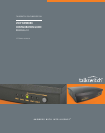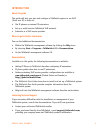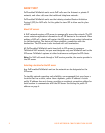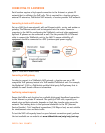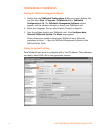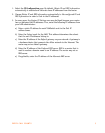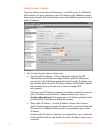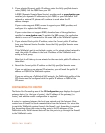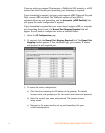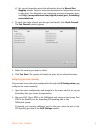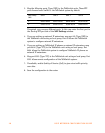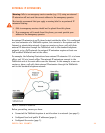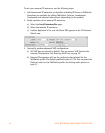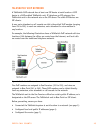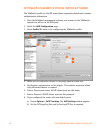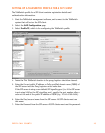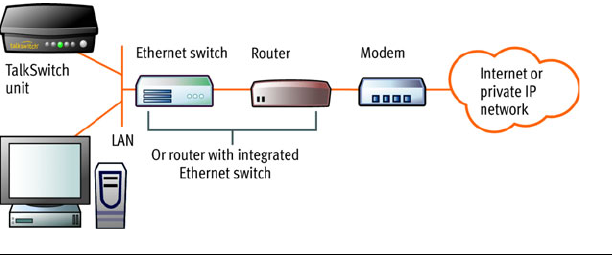
EVERY CALL COUNTS 3
CONNECTING TO A NETWORK
Each location requires a high-speed connection to the Internet or private IP
network that is sufficient for VoIP calls. This is required for a location using an
external IP extension, TalkSwitch VoIP network, or service provider VoIP network.
Connecting to local and IP networks
Set up a LAN (local area network) with an Ethernet switch, router, and modem or
gateway. The Ethernet switch can be integrated into the router. Connect a
computer to the LAN for configuring the TalkSwitch unit and other equipment.
Optional IP phones can be connected as well. Use the provided RJ-45 Ethernet
cable to connect the TalkSwitch unit to the LAN. To ensure reliability, all
equipment should be connected to a UPS (uninterrupted power supply).
Figure 1: Local and IP network setup
Connecting a VoIP gateway
In order to connect to a TalkSwitch VoIP network, a location can use a SIP-
compatible VoIP gateway instead of a VoIP-enabled TalkSwitch unit. For example,
the Mediatrix® 2102 is a TalkSwitch-certified third-party VoIP gateway that is
suitable for small branch offices or teleworkers.
Confirming network capacity
Ensure the LAN in each location has a reliable high-speed broadband connection
to the Internet or private IP network. The quality of VoIP calls, especially on
mixed voice and data networks, depends on high data-transfer rates across the
network. The limiting factor is the upstream bandwidth to the ISP (Internet
Service Provider). ‘Lite’ broadband connections (128 Kbps or less) are not suitable
for simultaneous voice and data traffic.
To test the VoIP call capacity based on your Internet connection speed, perform
the test available on our website at: www.talkswitch.com/voip/voip_test.asp.



